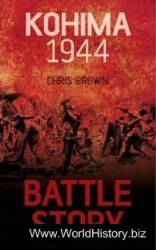A blue dye, indigo is obtained from more than 40 different varieties of perennial shrubs of the genus Indigofera within the pea family. Indigo-producing plants are native to tropical and subtropical regions throughout the world, including the Americas, Aerica, India, and Asia. Indigo has been used as a pigment for inks and paint as well as a dyestuff for cloth and yarns. The dye’s affinity for a variety of natural fibers, such as wool, linen, and cotton, and its colorfastness to both washing and sunlight have made it popular with textile manufacturers for thousands of years.
Traditionally, the leaves of indigo plants had been harvested and fermented to produce a dye paste, which was used regionally in tropical and subtropical areas of the world, especially India. Later, the addition of a final drying step gave producers a concentrated dye ideal for longdistance trade. Indigo dyes were introduced to western Europe by 16th-century Portuguese and Spanish traders returning from India and the East Indies and soon became an important trade commodity. By the 1700s there was a strong European demand for large quantities of indigo dye for garments and furnishing fabrics as well as for linen for flags and woolens for military uniforms.
Early in the 17th century European colonists in North America and the CARIBBEAN experimented with indigo cultivation. However, by 1650 most West Indian plantations had shifted to hugely profitable sugar production, and South Carolina planters were concentrating on rice cultivation. English textile manufactures, unable to obtain the dye from a British colony, turned to the French West Indies for their indigo supplies.
A young colonial woman, Elizabeth Lucas Pinckney, worked to hybridize indigo plants to suit the growing conditions of South Carolina. By 1744, aided by slaves and a West Indian overseer knowledgeable about indigo, she was successful and devoted much of that initial crop to seed production. She and her new husband, Charles Pinckney, gave the seeds to their neighbors. As further encouragement to new indigo planters, the South Carolina legislature offered a bounty on the exported dyestuffs. Shortly afterward, Britain, anxious for a source of indigo dye for its growing textile industry, added an additional bounty to the crop. Indigo was a very profitable colonial export commodity for the next 30 years. On the eve of the American Revolution, annual exports from South Carolina’s ports were more than 1 million pounds, second only to rice in its importance to the colony. Indigo production complemented rice production very well because the two crops had different growing seasons, and indigo required high ground while rice was grown in the lowlands.
Further reading: Jenny Balfour-Paul, Indigo (London: British Museum Press, 1998).
—Margo Krager




 World History
World History









